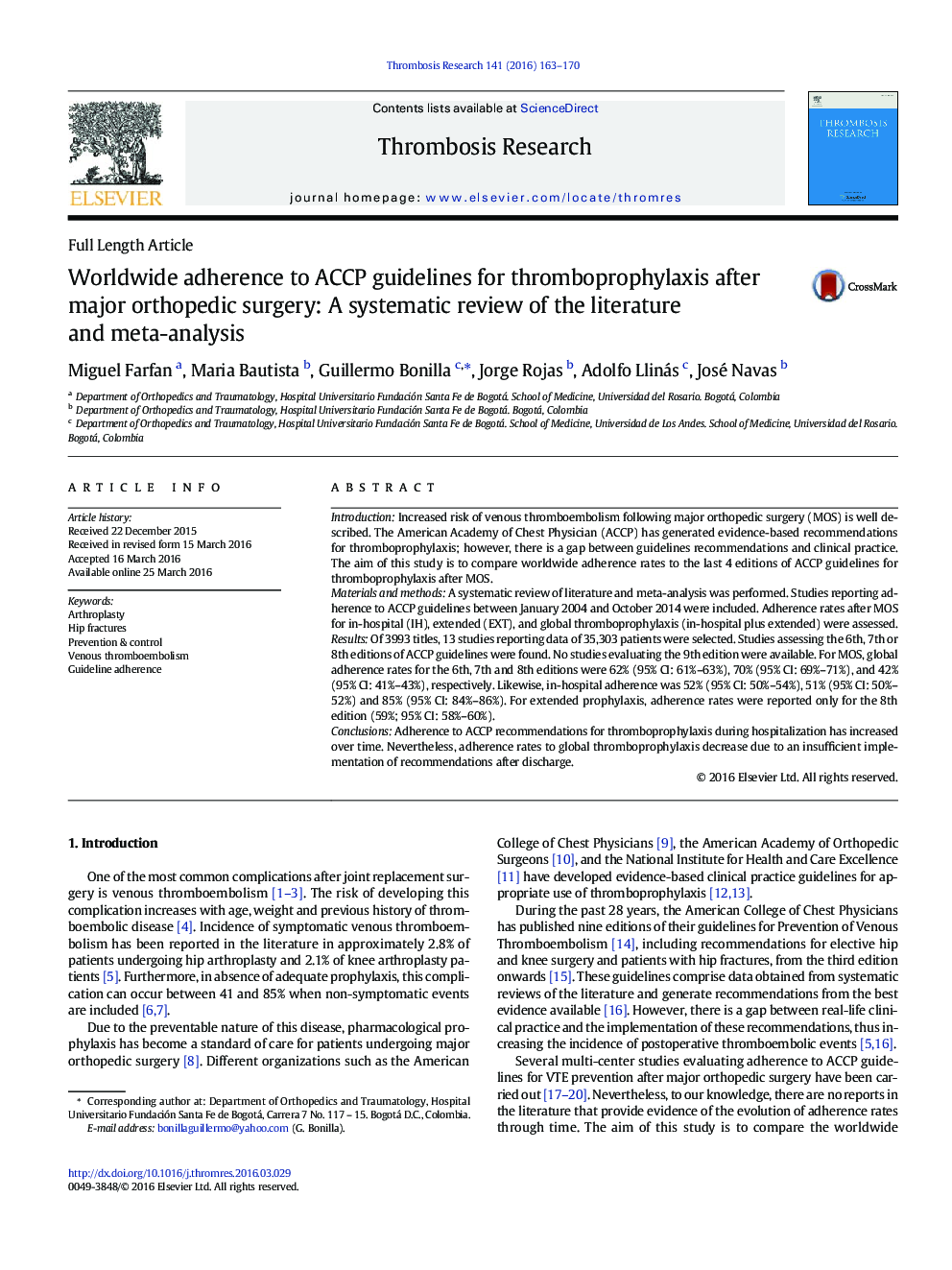| Article ID | Journal | Published Year | Pages | File Type |
|---|---|---|---|---|
| 6000454 | Thrombosis Research | 2016 | 8 Pages |
â¢13 studies reporting adherence on 35303 patients were included in the analysis.â¢Over the 3 editions compared in this review, few modifications to the ACCP recommendations have been made.â¢Worldwide adherence to the ACCP guidelines decreased significantly between the 6th and the 8th edition.â¢The effect of the modifications in newest guidelines (9th edition) on the rate of adherence remains to be determined.
IntroductionIncreased risk of venous thromboembolism following major orthopedic surgery (MOS) is well described. The American Academy of Chest Physician (ACCP) has generated evidence-based recommendations for thromboprophylaxis; however, there is a gap between guidelines recommendations and clinical practice. The aim of this study is to compare worldwide adherence rates to the last 4 editions of ACCP guidelines for thromboprophylaxis after MOS.Materials and methodsA systematic review of literature and meta-analysis was performed. Studies reporting adherence to ACCP guidelines between January 2004 and October 2014 were included. Adherence rates after MOS for in-hospital (IH), extended (EXT), and global thromboprophylaxis (in-hospital plus extended) were assessed.ResultsOf 3993 titles, 13 studies reporting data of 35,303 patients were selected. Studies assessing the 6th, 7th or 8th editions of ACCP guidelines were found. No studies evaluating the 9th edition were available. For MOS, global adherence rates for the 6th, 7th and 8th editions were 62% (95% CI: 61%-63%), 70% (95% CI: 69%-71%), and 42% (95% CI: 41%-43%), respectively. Likewise, in-hospital adherence was 52% (95% CI: 50%-54%), 51% (95% CI: 50%-52%) and 85% (95% CI: 84%-86%). For extended prophylaxis, adherence rates were reported only for the 8th edition (59%; 95% CI: 58%-60%).ConclusionsAdherence to ACCP recommendations for thromboprophylaxis during hospitalization has increased over time. Nevertheless, adherence rates to global thromboprophylaxis decrease due to an insufficient implementation of recommendations after discharge.
